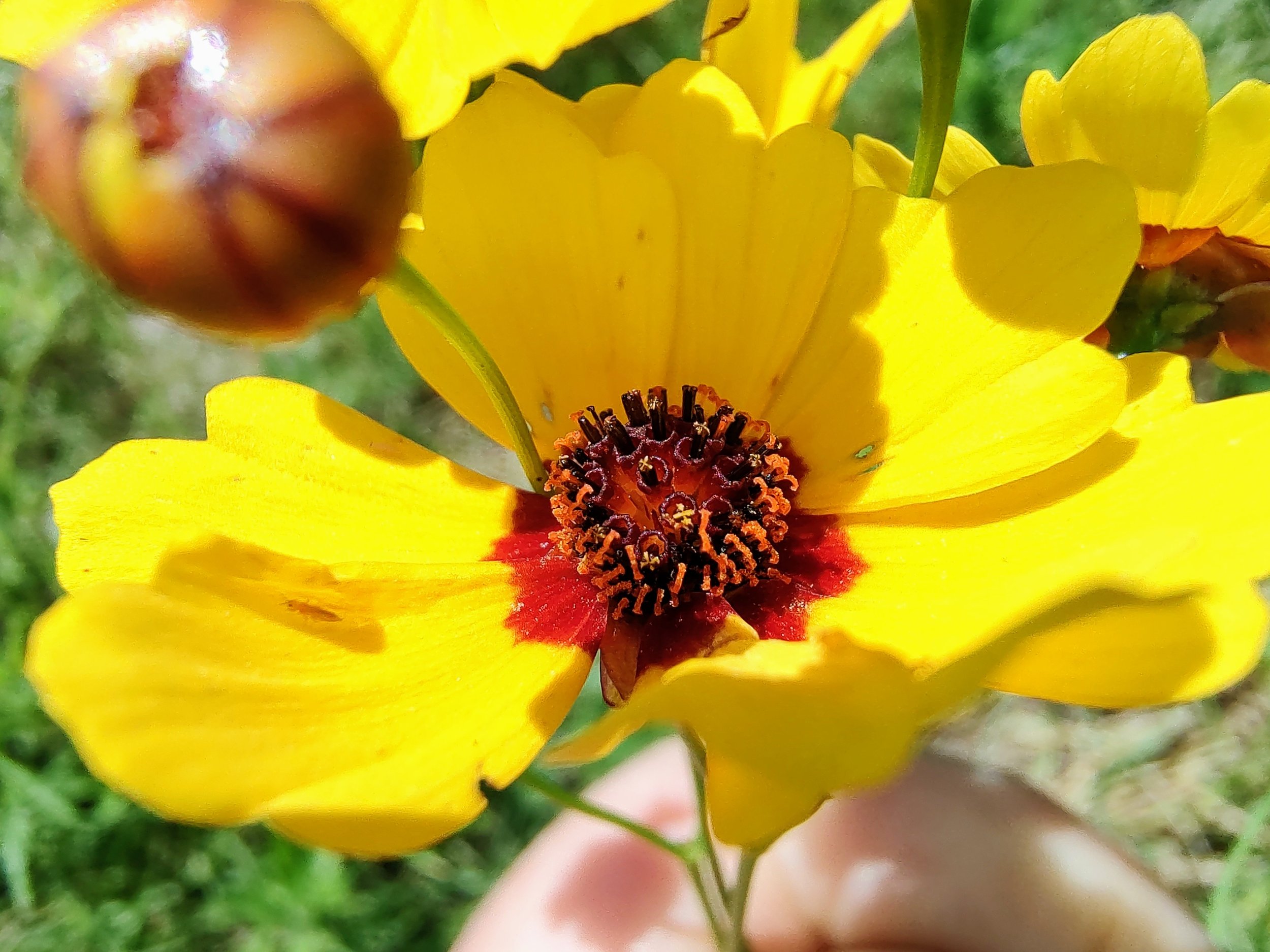June through September
Plains Coreopsis
Coreopsis tinctoria
Plains coreopsis has been blooming in the Making Trash Bloom native plant pilot plot for over a month already and it’s still going strong. The individual flowers are small but many of them adorn the threadlike stems of each plant. The long lasting yellow blooms explain the other common name of golden coreopsis. Like lanceleaf coreopsis, it is called a “tickseed” due to the small seeds that resemble small insects. It has been used as a source for yellow and red dyes, hence the species name of "tinctoria" as in “tinted.”
Similar to purple coneflower, this “native” is not quite native. It is native to the United States west of the Mississippi River but any wild populations in the East are descendants of ancestors that escaped from cultivation. Many species of native insects are adapted to use it and other coreopsis species, so I generally consider it “native enough.”
These flowers remind me of bullseyes on a dart board, and that is probably to help potential pollinators zero in on the center of the blooms. Bees see contrasting colors well, and insects' ability to see ultraviolet light likely makes these contrasting patches look even more dramatic. If, like me, you have wondered why so many wildflowers are yellow and purple, it turns out that many bees have photoreceptors that are much better at receiving light in the yellow and blue ranges and are poor at absorbing red. There is also something called “bee’s purple” which is a shade that humans cannot see, made of a combination of yellow and ultraviolet light. Interestingly, some people can see into the ultraviolet range, often after an ocular lens injury. Reportedly, French impressionist painter Claude Monet was largely colorblind, limited to mostly seeing red and orange. However a cataract surgery affected his lens shape and allowed him to see ultraviolet, deep purple, and blue hues that started appearing in his paintings after that event.
Check out the information below to see if this native plant might be a good fit for your yard!
Bloom Time: June through September, for 1-2 months
Height: 1'-2'
Cultivation: Annual (may bloom 2-3 years before dying). Full sun, best on sandy well-drained soils. Propagate by division in fall, lifting a clump from the outer edge of the plant and separate out rosettes, removing a few leaves from each to reduce moisture loss, replant and water thoroughly.
Propagation by seed: Nutlets are mature and ready for collection about four weeks after flowers wither. Watch the inner series of bracts; when they begin to darken, it is time to collect. Remove chaff and store in sealed, refrigerated container. Storage life at least 3 years. Indoors, generally germinates without pre-treatment. Do not cover soil. Outdoors, sow in late fall or following spring. Self sows as well if seeds are allowed to fully ripen on plant.
Pollination/Insect Interaction: Provides nectar and pollen to a wide variety of insects, including long- and short-tongued bees, wasps, flies, butterflies, skippers, and beetles. Leaf beetles and caterpillars of some moths feed on the foliage of Coreopsis spp. and similar plants.
Plains coreopsis blooming at the Shenandoah County Landfill. Coreopsis flowers earn the common name of “tickseed” from the small black seeds in the center of the flower, which resemble small bugs.
A dainty flower with wispy leaves and stems, but cheerful blooms!



